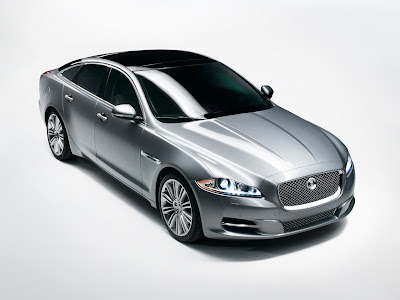Tuesday, August 24, 2010
2010 Jaguar XJ - Jaguar Cars
Jaguar XJ is not only enhanced in terms of design, technology and performance it is also the most environmentally responsible model as well! Recently Britain’s VCA (Vehicle Certification Agency) audited and approved t imhe new XJ’spact on environment over a specified lifetime (200,000km), including the materials used, material processing, assembly and transport during manufacturing. Jaguar is now recognized as a manufacturer with great efforts to reduce its carbon footprint.
Paul Markwick, VCA CEO, said,. “I’m delighted to present this certificate to the team at Jaguar; I know it marks the culmination of a lrot of had work. Environmental issues are rightly high on the business agenda so it is great to see industry embracing initiatives such as Life Cycle Assessment, This demonstrates a clear commitment to the management of environmental impacts at all stages of the product life cycle, from concept through to the end of vehicle life. VCA has supported the automotive industry with its certification needs globallyan 3 for more th0 years and this extensive knowledge of the sector means that our audit teams understand the complexities of the vehicle design and construction process and the legislation supporting this”.
A key focus for future development will be the unique lightweight aluminium vehicle architecture which lies at the heart of the latest Jaguar XJ.
Based on aerospace technology, the aluminium body structure offers a number of major advantages compared to a conventional steel shell, including a substantial cut in the energy required for manufacturing and a significant reduction in weight.
The aluminium body in the new XJ uses up to 50 percent recycled material, with a plan to increase this to 75 percent. Body panels made from recycled material use only five percent of the energy required for new aluminium, equating to a potential saving of three tonnes of CO2 per vehicle compared to a bodyshell made from new aluminium.
The XJ’s aluminium structure also saves around 150kg compared to an equivalent steel body, allowing the use of smaller, more fuel efficient engines with no compromise to performance. Equipped with the 3.0-litre AJ-V6D turbodiesel, the XJ delivers an impressive combined economy figure of 40.1mpg and CO2 emissions of 184g/km.
“Jaguar has been at the forefront of developing lightweight aluminium bodies for the past decade, and the lifecycle assessment will help us find new opportunities to enhance their environmental benefits,” says Mark White, Chief Technical Specialist Body Engineering.
“With a holistic approach, which takes account of the energy required during manufacturing, the advantages of an aluminium structure are particularly compelling. Compared to a typical steel-bodied competitor, we estimate that the new Jaguar XJ can cut CO2 emissions by six tonnes per vehicle over the whole lifecycle.
Labels:
Jaguar
Subscribe to:
Post Comments (Atom)

No comments:
Post a Comment